Flowering trees announce the beginning of Spring. No wonder that trees that bloom in March and April are the most popular in garden centers. The pictures below are from trees in my garden. They are all highly recommended.
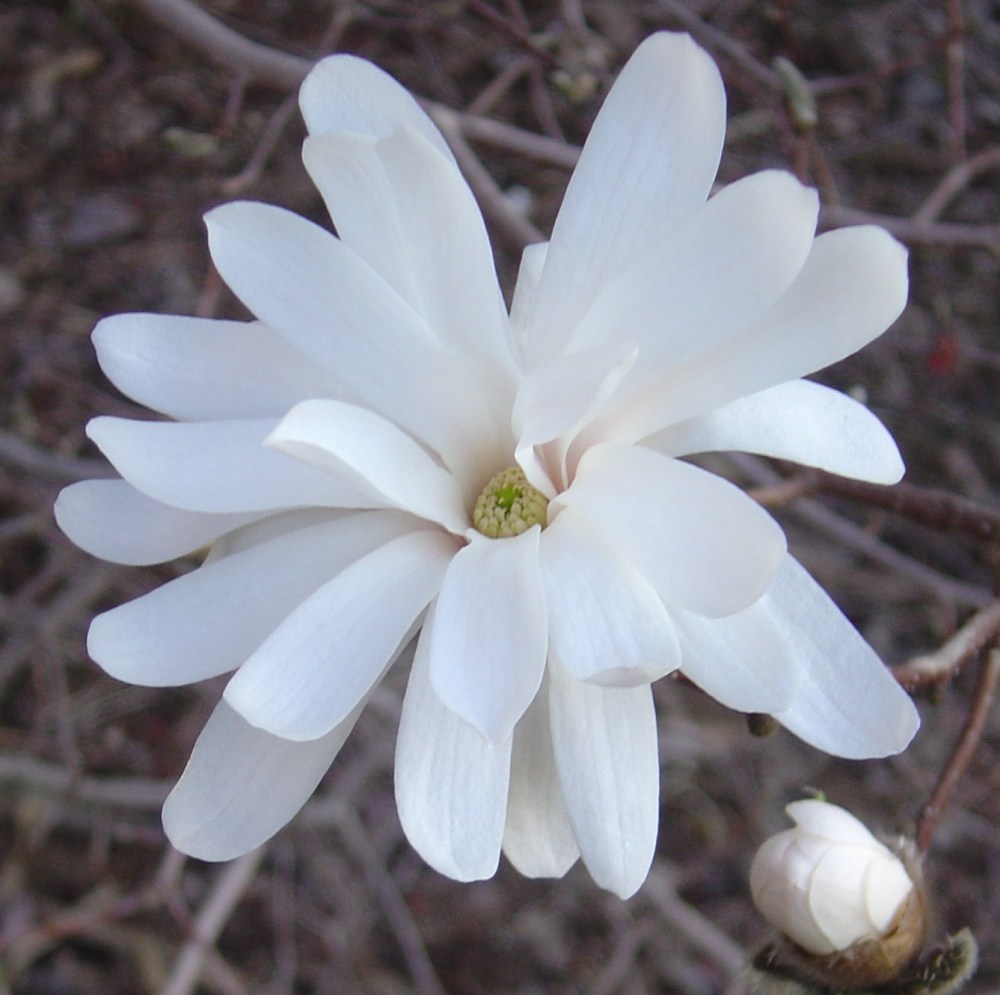
Royal Star magnolia is the first tree to bloom for me, usually in early March. The large white flowers appear before leaves, and may be damaged by late frost, although this is rarely a problem in my garden. Royal Star is usually grown as a multi trunk small tree. It will grow nearly as wide as it is tall. In leaf it is rather ordinary without distinctive Fall color.

The Saucer-type magnolias bloom a bit later than Royal Star, and ocassionally suffer frost injury. In my garden I have Dr. Merrill, which is much more upright than other deciduous magnolias, and Jane, which blooms a couple weeks later and almost never is troubled by frost. Jane grows as wide as it is tall, and is unique in that it blooms sporadically through the Summer.
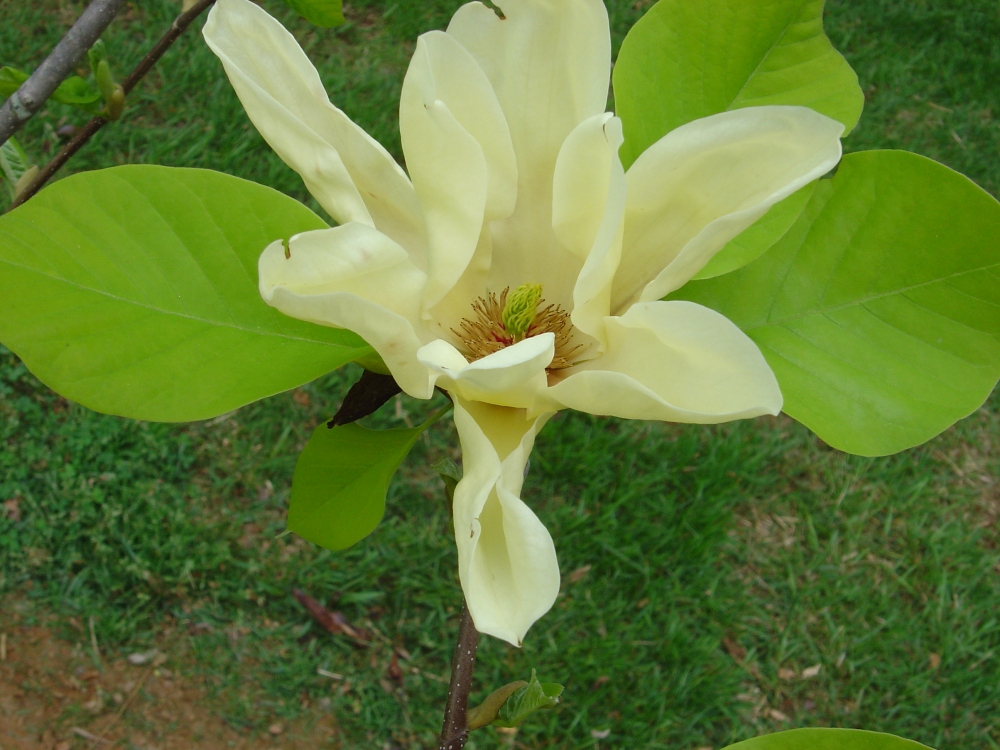
Elizabeth magnolia has an upright growth habit with pale yellow flowers, and is rarely bothered by cold.
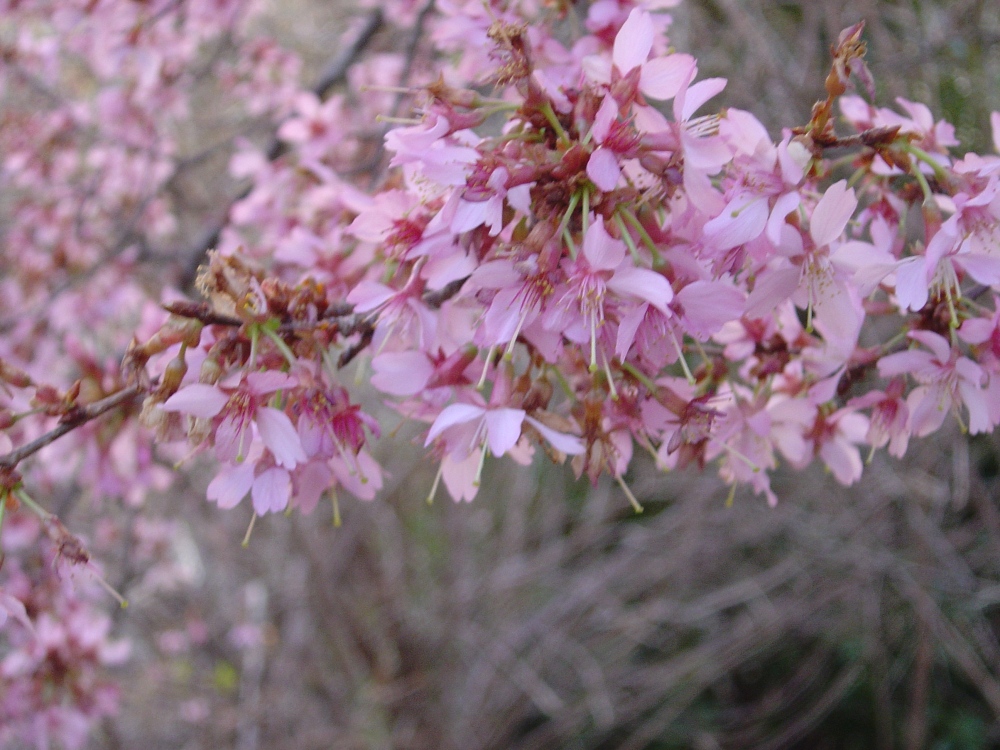
This photo is Okame cherry, the earliest cherry to bloom in my garden. Okame is a much smaller tree than Kwanzan and Yoshino cherries, the most common trees from the Tidal Basin in Washington DC. These bloom a couple weeks later than Okame.
The blossoms of the pink weeping cherry are a darker pink than the Okame. Most weeping varieties are grafted onto the straight trunk of an upright growing cherry, usually at about five feet in height. My weeping cherry has been grown on its own roots, so it has grown quicker to its mature height of about thirty feet tall and wide. The grafted trees will grow somewhat slower, but will reach the same height eventually.
Pink weeping cherries are often used in locations that the homeowner later regrets due to their eventual size. For areas where a smaller tree is required the Snow Fountain white flowering weeping cherry is a better choice.
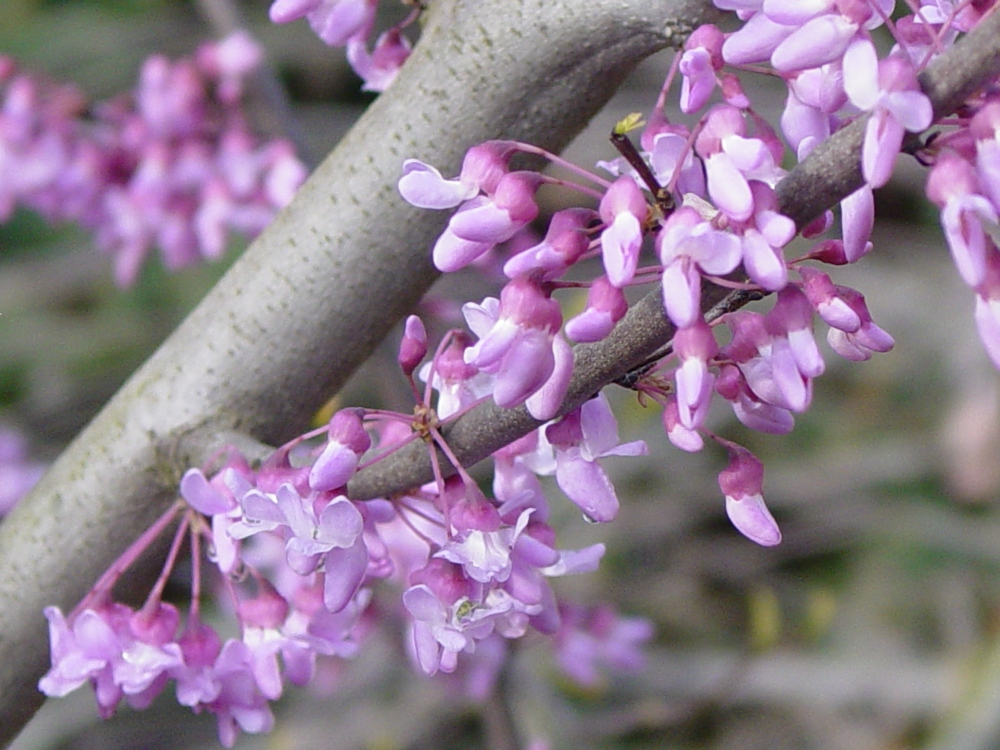
Redbuds burst into bloom near the end of March, although cold may delay this by as much as two weeks. These native trees often line the forest edge along highways. While they are an understory tree that will grow beneath taller trees, they bloom much better in a sunnier location.
I have several redbud varieties in my garden, Forest Pansy with red leaves, Silver Cloud with splashes of white and pink, Lavender Twist, a weeping redbud, and Hearts of Gold with yellow leaves. The flowers are the same on all of these, as is the bloom time.
 Beginning to bloom just as Redbud fades the second week of April, the native dogwood Cornus florida is a spectacular tree. Blooms often fully cover the tree before leaves appear. Leaves through the year are rich deep green, and turn a brilliant red in the Fall. Bright red berries appear and often persist into the Winter, so the tree has interest throughout the year. The native dogwood is susceptible to a number of diseases, but improved selections such as Cherokee Princess and the newer Appalachian Spring are much more resistant.
Beginning to bloom just as Redbud fades the second week of April, the native dogwood Cornus florida is a spectacular tree. Blooms often fully cover the tree before leaves appear. Leaves through the year are rich deep green, and turn a brilliant red in the Fall. Bright red berries appear and often persist into the Winter, so the tree has interest throughout the year. The native dogwood is susceptible to a number of diseases, but improved selections such as Cherokee Princess and the newer Appalachian Spring are much more resistant.
The native dogwood is available in several improved white varieties, pink, and red (although most view the red as a dark pink), as well as a weeping white bloomer, and others with leaves that are splotched with yellow or white. I have several white dogwoods in my garden, the weeping white, Cherokee Daybreak (variegated with white), and Cherokee Sunset (variegated with yellow). There is no better tree in the garden.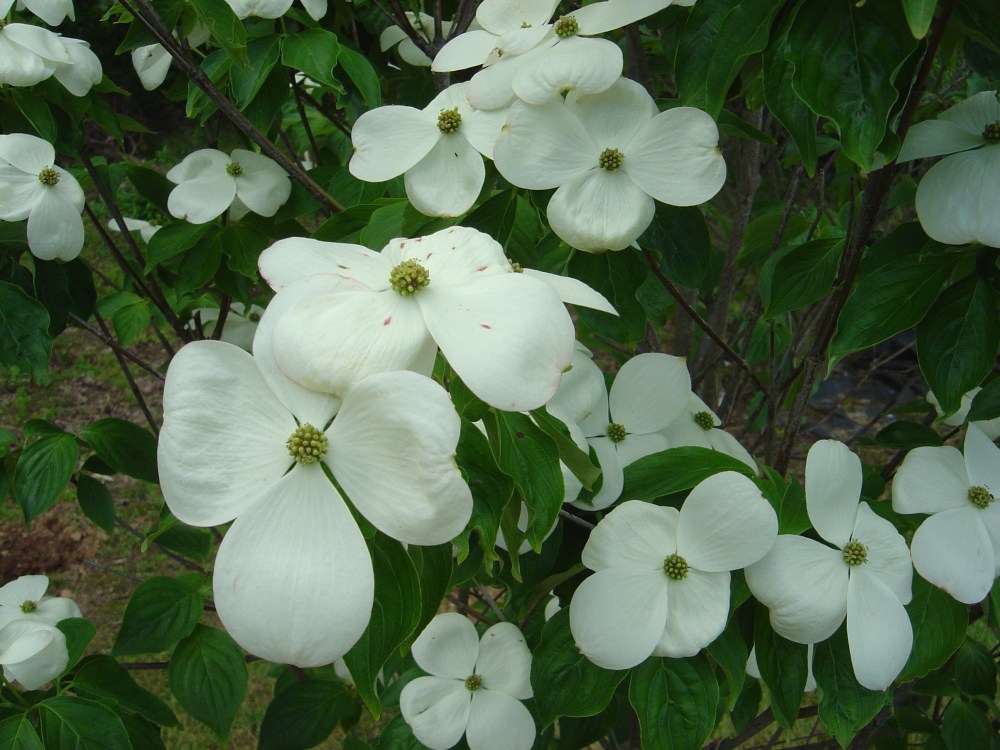
Following the native dogwood in bloom are dogwoods developed as hybrids from the native Cornus florida and Cornus kousa at Rutgers University. These hybrids are vigorous growing and seem to be completely resistant to the common dogwood diseases. Even in the heat of Summer when florida and kousa varieties don’t look happy, the Rutgers dogwoods leaves are fresh and green.
The growth habit of the Rutgers dogwoods is a bit looser than the native dogwood, and they bloom after leaves appear, so the flowers are slightly less prominent, but this is an outstanding tree. I have Rutgers varieties ‘Celestial’ (seen above) with large white flowers, and Stellar Pink (below). Stellar Pink has variable color blooms that will be pure pink when we have a cool, wet Spring, but otherwise will be white with a pink blush.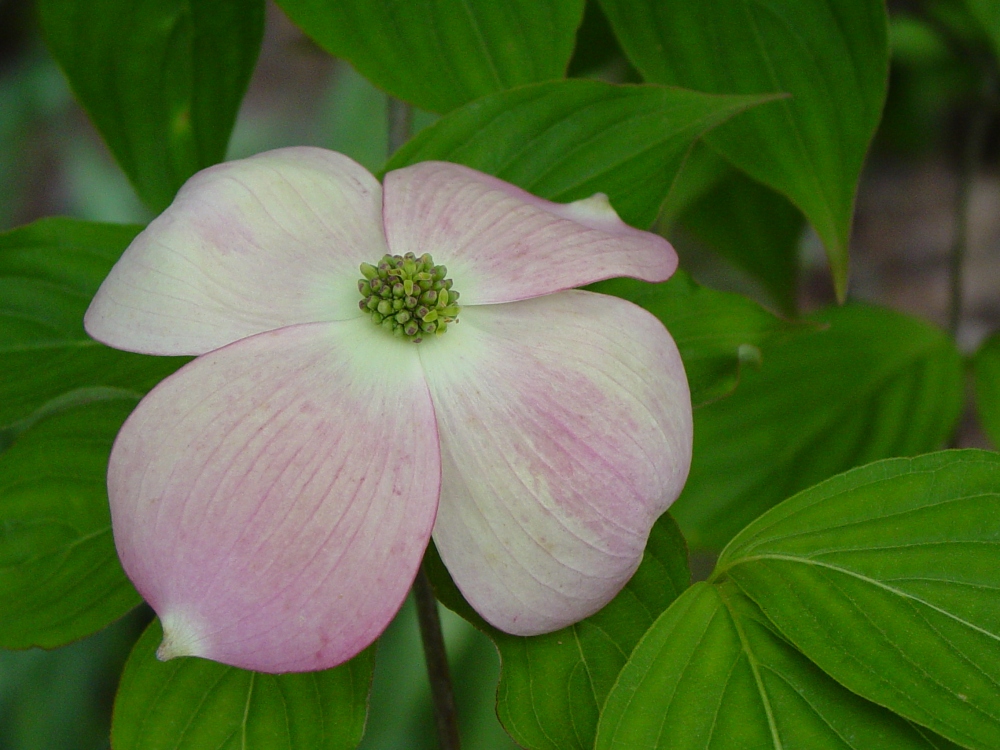
Following the Rutgers dogwoods the Chinese dogwoods, Cornus kousa begin to bloom in mid to late May. The photo below is the ‘Satomi’ pink flowering variety. Most kousa varieties are white, but there are ones with green and white variegated leaves such as Wolf Eyes and Samaritan.
Kousas tend to be tall, and almost shrub-like (slightly taller than wide) with multiple trunks or at least very low branching. They are extremely disease resistant, and great trees for the garden. Kousa dogwoods get a large red, strawberry-like fruit in the Fall. 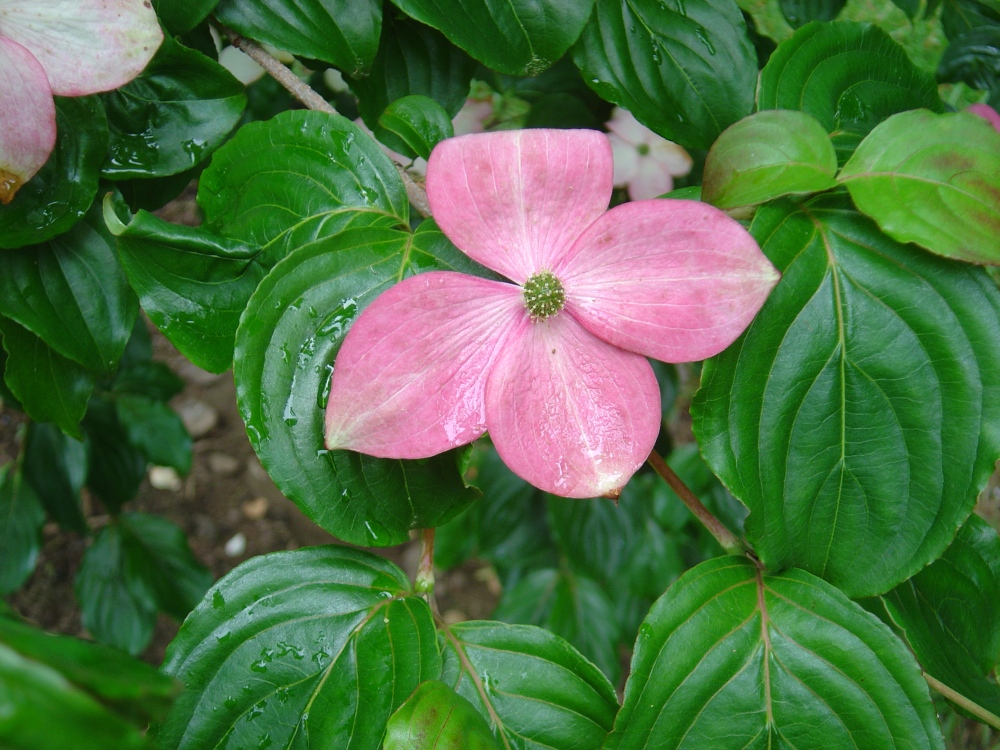
These are truly oustanding trees for the garden. Most will tolerate heat, cold, clay soils, drought, and pests with a minimum of maintenance.With the exception of the larger flowering cherries these are trees that are well suited to smaller gardens.
I have about 6 year old white multi trunk dogwood that bears red fruit. Last year it had the best flowering ever, totally covered in flowers and later fruit. It started budding in the spring, but I guess frost must of hit it because the leaf buds and the whole tree just did not progressed any further. The tips of the branches are now dry, but there is life in the tree because the rest of the branch is still green inside and from the bud on the base of the tree small branches are growing. They are not as vigorous as suckers would be. What do I do? Is there hope that the tree will recover if I put some miracle grow spikes around the drip line. Please help, I really like this tree (even if I do not remember its name) and would like to save it.
Thank you ahead of time for any helpful suggestions you can offer me.
Viera
Both the native dogwood, Cornus florida, and Chinese dogwood, Cornus kousa, have red fruits, though the native dogwood’s are clusters of red berries and the kousa dogwood’s are large, single strawberry-like fruits. Cornus florida flowers before the tree leafs, and Kousa after, usually in May.
I’m guessing that your tree was the native Cornus florida since flower buds were evident in early Spring. Cornus florida is also much more likely to suffer fatal injury from improper pruning or lawn mower or string trimmer damage, or due to drainage problems. Many times a dogwood that is severely stressed will flower heavily, apparently a mechanism to try to produce additional seed to grow the next generation. After flowering the tree’s decline accelerates, although it will usually succumb over the Winter. Sometimes the dogwood will leaf the following Spring, but leaves will be small, and the dogwood will die in the Summer.
Death rarely comes quickly to established trees. Maples and poplars that are cut off at the base in late Fall will often sprout leaves in the Spring, and there is still enough life in your tree to sprout the sucker growth that you are seeing. I’m sorry to say that it is unlikely that any efforts will result in saving the tree.
I planted an Okame cherry tree last spring in my small front yard to provide some privacy. It was very difficult to avoid planting it far away from the underground public water or sewer line leading to my house from the street. How wide are the Okame cherry tree roots at maturity? I’m afraid the roots might damage the water and/or sewer lines. I heard the sewer line is buried deep (about 5 feet) in the ground.
Should I replant the Okame cherry tree elsewhere on my property?
Okame cherry will grow about twenty feet wide and the roots might grow slightly wider. However, in most soils 90% of the roots are in the top ten inches, with only a few deeper. Cherries tend to be shallow rooted, so I doubt that you’ll have a problem.
I just purchased a Jane Magnolia I was wondering what depth the roots go to before I select a location.
The base of the tree (where roots end and trunk begins) should be planted just slightly above the soil level. It is important not to dig the hole too deep so that the heavy rootball of the tree is placed on uncompacted soil. This can result in the rootball settling and the tree being too deep. Planting a little too shallow is rarely a problem, but planting too deep can be a big problem.